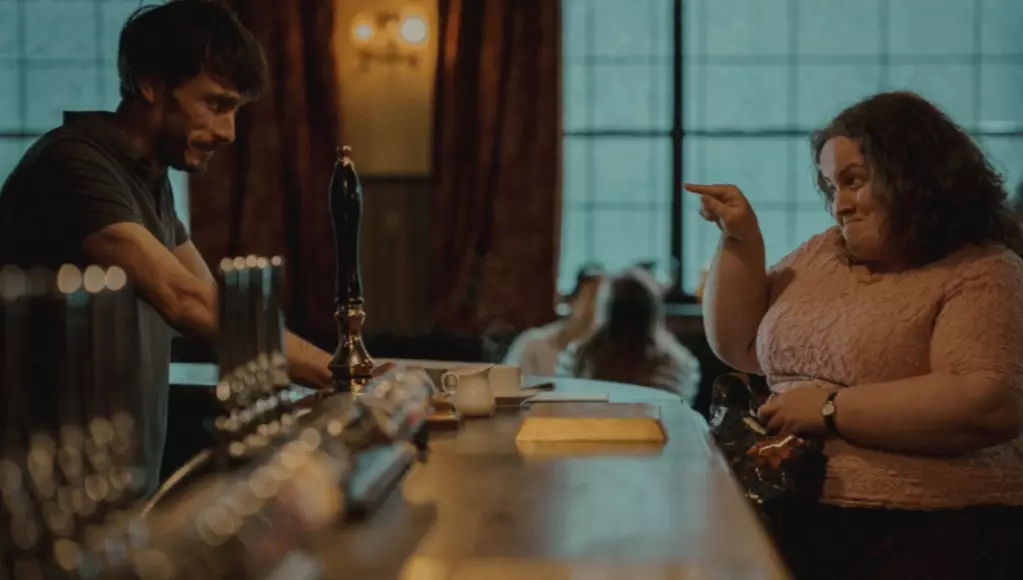The recent Emmy Awards showcased both the artistic achievements and the intricate moral dilemmas surrounding storytelling, particularly with Richard Gadd’s “Baby Reindeer.” This Netflix production, which celebrates Gadd’s journey as a comedian dealing with a stalker, has garnered critical acclaim. However, the accolades overshadow a significant ethical question: at what cost does artistic expression come? A woman named Fiona Harvey, who claims to be the real-life inspiration behind the character portrayed as a stalker, alleges that her life has spiraled into turmoil since the show’s release.
The juxtaposition of Gadd’s newfound success and Harvey’s distress is striking. On one hand, the show brought Gadd multiple Emmy awards for acting, writing, and production; on the other hand, Harvey shares that she is burdened by anxiety, insomnia, and an overwhelming fear of leaving her home. These stark contrasts challenge us to consider the impact of creative interpretations on real individuals. Is it fair for artistic endeavors to tread on the lives of others, transforming them into fictional characters, often without their consent or well-being in mind?
Fiona Harvey’s vocalization of her suffering sheds light on the profound mental health implications that can arise when one’s story is turned into entertainment. In her interview with the Daily Mail, she expresses an understandable fear of being victimized further. Living with panic attacks and depression, her narrative diverges dramatically from the dramatized version presented in “Baby Reindeer.” Harvey’s statement brings a haunting reality to the surface: “I am afraid to go outside out of fear of being attacked. Some weeks I do not leave my apartment.” These words resonate with anyone familiar with the debilitating effects of anxiety, forcing a re-evaluation of the narrative surrounding mental health in both media and personal contexts.
Critically, Harvey’s lawsuit against Netflix, which seeks $170 million in damages for defamation and emotional distress, raises awareness of the balance between creative expression and the protection of individuals’ reputations. Gadd’s claims, including the assertion that the “real” Martha sent him an overwhelming number of emails and voicemails, have been contested by Harvey, highlighting the disparities between truth and the creative liberties often taken in storytelling. This begs the question: should creators be held accountable for the realities they depict, particularly when real-life individuals are involved?
As the public continues to scrutinize Gadd’s work, the incident underscores a broader issue regarding how fame can inadvertently strip individuals of their privacy. With Gadd basking in the limelight, Harvey feels cast into shadows of her own narrative. Richard Roth, her attorney, offers insight into this disparity, noting the stark contrast between the two lives. The ramifications of Gadd’s thriving career serve as a painful reminder of how one person’s ascent can often mean another’s descent into hardship.
Despite Gadd’s assertion that the series is not a direct retelling of events, the cautionary principle remains: certain storylines can hit too close to home, igniting emotional pain for those involved. Netflix CEO Ted Sarandos’ comments defending the show and its “true story” label further complicate the narrative landscape, suggesting that even with disclaimers, the emotional responsibility for the characters cannot be so easily dismissed.
Ultimately, the controversy surrounding “Baby Reindeer” presents a vital opportunity for the entertainment industry to reflect on the ethics of storytelling. As viewers, we must engage critically with content that may have real-world implications for individuals, especially those who may not have the platform to speak out. As Harvey battles her mental health struggles while pursuing legal restitution, the industry must recognize that the narratives they create do not exist in a vacuum; they ripple outward, affecting the lives of individuals in complex and often painful ways.
While art is a powerful tool for reflection and connection, it comes with the inherent responsibility of considering the humanity behind the stories we share. There is a delicate balance between artistic freedom and the potential harm of misrepresentation, and it is time for creators to recognize that the stories we tell should include a respectful acknowledgment of those who inspire them.


Leave a Reply